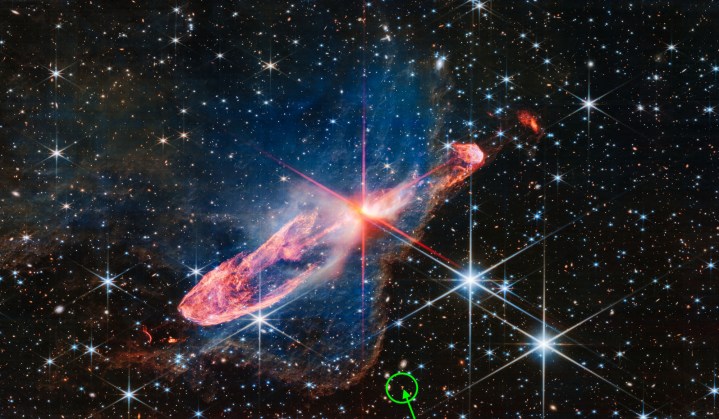
Considering the myriad of unknowns that still exist for scientists exploring the vastness of the universe, the recent discovery in deep space of what seems to be a giant question mark feels highly appropriate.
Captured by the powerful James Webb Space Telescope, the bright, distinctive object clearly bears the shape of a question mark, leaving some stargazers wondering if the cosmos is teasing us, or perhaps motivating us to keep on searching the depths of space for the secrets that it may reveal.
But after spending some time analyzing the image, scientists believe it most likely shows a pair of galaxies merging, with Webb’s perspective causing the event to take on the shape of the familiar punctuation mark.
“It’s probably a distant galaxy, or potentially interacting galaxies [whose] interactions may have caused the distorted question mark shape,” the Space Telescope Science Institute (STScI) in Baltimore, which manages Webb’s science operations, told space.com.
“Additional follow-up would be required to figure out what it is with any certainty,” according to the Institute, adding that this could well be the first time astronomers have seen a cosmic question mark.
The image that includes the mark was released by the Webb team at the end of June, but it’s only just started to receive widespread attention.
The main part of the capture (below) offers a detailed look at two actively forming young stars ( Herbig-Haro 46/47) located 1,470 light-years from Earth in the Vela Constellation. The stars are surrounded by a disk of material that they on feed as they grow. The question mark can just about be spotted in the background at the bottom of the image (we’ve put a green circle around it).

The Webb telescope, which is located about a million miles from Earth, recently celebrated its first year of operations by sharing yet another stunning image from deep space.
The $10 billion project is a collaboration involving NASA, the European Space Agency, and the Canadian Space Agency. The aim is to make groundbreaking discoveries about the origins of the universe while also searching for distant planets that may support life.
Editors' Recommendations
- James Webb captures the edge of the beautiful Horsehead Nebula
- The expansion rate of the universe still has scientists baffled
- See 19 gorgeous face-on spiral galaxies in new James Webb data
- James Webb Space Telescope celebrated on new stamps
- James Webb captures a unique view of Uranus’s ring system


